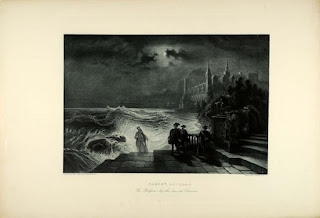Jean-luc Godard in Notre Musique (2004) set in the post-war landscape of Sarajevo, develops a narrative of text versus image, where the written text is often the work of the 'winner', taking as an example Israel versus Palestine.
Going further back, Homer is the text of the Trojan war. However, he also has a story of Heisenberg (of the uncertainty principle) and Bohr walking in Denmark past an unprepossessing castle. Heisenberg says that's just a castle, but Bohr notes it's 'Hamlet's castle'
This makes the point that text has to include image, but the image has a type of certainty that otherwise it would not. Godard himself adopted a documentary style of filmmaking that he would call 'Image' (as apposed to defunite narrative), but he psychically superimposed a narrative. Documentary and fantasy become intertwined.
So, the idea of pure documentary is probably a non-sequitur as there is always an agenda. Taking it a bit further, if science is documentary (image) with no agenda then it could lead to a type of non-existence (zero or nothingness.)
This leads back to KT Tunstall's poster (P221) with the lyrics to 'Canyons', set in a physical reality of wide horizon and steep canyons. The 3 dimensions of space, plus the 1 of time or expression.
From this classic American landscape, Tunstall develops the lyrics relating to psyche (Nut). The psyche emanates from the physical in the sense of power.
Tunstall is pretty insincere, if you listen to her spiel at performances; that is really to say she is not being that literal, she is being wry or deliberately offensive. She is not held by the material reality in front of her but by her peculiar interpretation of reality (psyche.)
The problem is that American material reality is very head-based (as I've been saying for awhile) and therefore not the true reality which is physical (the undulating lines of cattle trails, the range.)
The science-based material reality is uncertain, while the physical, undulating reality is certain. The American epic is a narrative about the image. In Godard-esque terms, this would mean American reality has now become text rather than image. The image is needed to form a psychic component, and modern images have no psychic component.
The exception would probably be comic book images, which are more fantastical. This trend is pushed even further in Japan, where various modes of Manga describe the etiquette of Japanese life assailed by various spiritual forces.
One story from Wings (devoted to women readers) is all to do with the humdrum activities of a dairy farm from Hokkaido, the prefecture which is likened to the frontier West of America.
Creator Hiromu Arakawa is known for her Fullmetal Alchemist which gives an indication of the diversity.This leads to the odd conclusion that, though the Japanese are homogeneous racially, they are heterogeneous in their psyche! Especially in the fertile area of sex and etiquette. Developing the psyche depends on physical awareness, and not on living inside the head.
As previously noted, the physical, undulating reality contains 3 dimensions of space and 1 of time. All of this is tacitly ignored by a science of number and algorithm (and variable time or machine-time, calculation.)
In other words, the science of technique can be uncertain and unreal in terms of the expression of psyche in physical, undulating settings of work, acrobatics, livestock, the range.
The physical reality is dirty while the technical reality is hygienic. But from dirt comes fertility and revival (see Buffy quote.) The Western obeyance to technique was clearly picked-up by Bruce Lee in Artist of Life (prev).
In the book he is discussing the demerits of traditional Chinese teachers of Gung Fu, but the same argument can be applied to the West.
The techniques, though they play an important role in the early stages, should not be too restrictive, complex or mechanical. Remember, you are expressing the technique and not 'doing' the technique. When someone attacks you it is not technique number one (or is it technique number two, stance two, section four?) that you are doing, but the moment you are 'aware' of his attack you simply move in like sound and echo without deliberation. It is as though when I call you, you answer me, or when I throw something to you, you catch it. That's all. (page 30)
In other words, technique takes one out of simple and effective action without need for thought. Note that Raducanu, for all her experiments with trainers, has not been able to match the fantastic free-hitting of her initial win at the US Open.
Techniques are only useful things; reality itself is the physical one of dimensions and the expression of time (music.)
The neutralising trend in modern material reality is the diminution of physical differences in favour of the machine. This could be likened to the neutral zone in sex (as in certain Godard films from Weekend to his last Goodbye to Language.)



